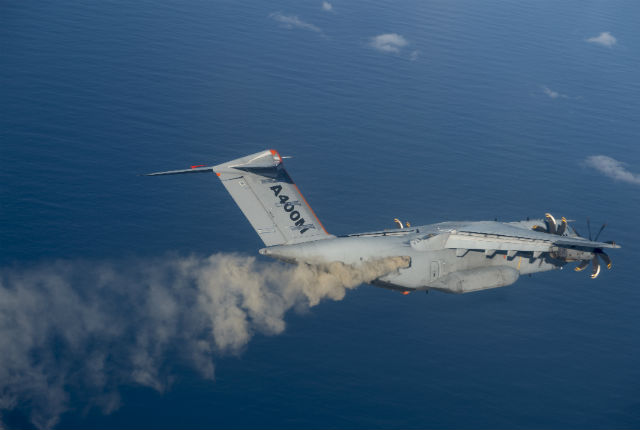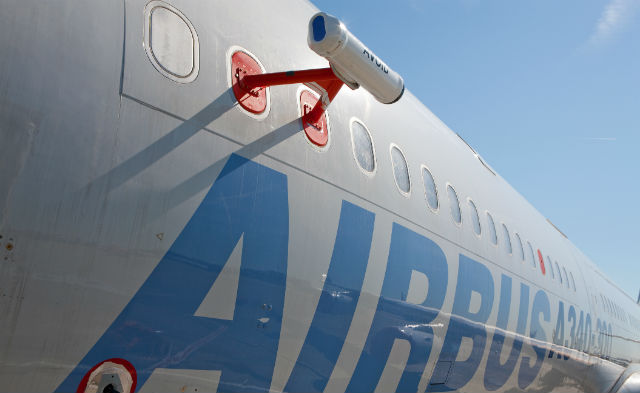Budget carrier EasyJet along with partners Airbus and Nicarnica Aviation have completed the final test of their jointly developed Avoid ash-detection system in the skies above the Bay of Biscay.
Following the successful trial, EasyJet will look to install a number of the systems on its A320-family jets by the end of 2014, it says.
The test involved the creation of an artificial ash cloud to simulate the plume of debris caused by the eruption of Iceland’s Eyjafjallajökul volcano in 2010 which brought chaos to travellers through the closure of most European airspace.
Utilising an Airbus Military A400M airlifter, the team dispersed 1t of Icelandic ash into the atmosphere between 9,000-11,000ft (2,740-3,350m).

Airbus
A second Airbus test aircraft, an A340-300, with the Avoid technology installed, flew towards the ash cloud identifying and measuring it from around 32nm (60km) away.
An additional aircraft, a Diamond DA42 from Düsseldorf University of Applied Sciences, was used to fly into the cloud to take measurements which help to corroborate the recordings made by the Avoid system.
The ash cloud produced during the test was between 600ft and 800ft deep measuring 2.8km across.

Airbus
Ian Davies, EasyJet engineering director, says: "The threat from Icelandic volcanoes continues and so we are delighted with the outcome of this unique and innovative experiment.
“Finding a solution is as crucial now as ever to ensure we never again see the scenes of spring 2010 when all flying ceased across Europe for several days.”
Charles Champion, Airbus executive vice-president, head of engineering, adds: “Today with Avoid we wanted to prove in the project that the ash-detection concept can work and this has been demonstrated in the test. Now we need to analyse all data gathered.”
Source: Cirium Dashboard






















